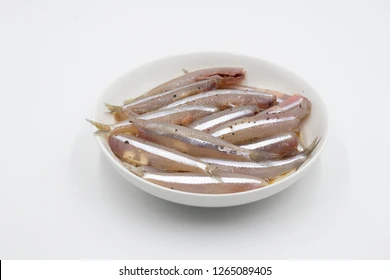FYI: It is FULL-FLEDGED not FULL-PLEDGED, Correct Usage, Bisaya to English of Common Vegetables, Fishes, more bits of info
FYI🔎🔎🔎: Bisaya to English of
Common Philippine Fishes,
Vegetables, Flowers, Animals,
🌺🍌🍒🐡🐠🐟bits of info
You'll be surprised 💨Full-pledged is
wrong, correct way is full-fledged,
explanation below.
Being a subscriber to US
homesteading channels in Youtube,
I've heard of the
plums and lychee preserves they make.
Filipino version of black plum or
Java plum is lomboy and lychee is
rambutan can be found here, too.
Most of us do not know that anchovies
(bolinaw in Bisaya and dilis in Tagalog)
are caught by fishermen in the US,
Peru, and other countries also.
Bolinaw or Anchovy
Lau-lapu fish or Grouper fish
Our local fish Lapu-lapu is called
Grouper fish in English. Many fishermen
in other countries catch grouper fish or
Lapu-lapu through recreational fishing
(mamasol). It is expensive in the
Philippines so do in other countries.
FYI is a series in my blog that aims
to provide interesting information that
can be useful. In this particular post,
it amazes me to know that ferns
are edible (can be eaten), too, and in
fact when we visited Bohol, we ate
PAKO, which is actually a fern.
Pako or Edible Fern
Pako or Fiddlehead Fern Salad rich
in potassium with Itlog Maalat
(Salted Egg)
Most often we only learn the local
names and are surprised that they
have English names,too and can be
found elsewhere in the world.
Here they are:
Bisaya to English Names of Vegetables
and Plants
Ube - Purple Yam (made popular by
Ube ice cream)
Sayote - Chayote
Gabi - Taro Root
Kamunggay - Moringa, Horse Raddish
Tangkong - Water Spinach, Swamp
Cabbage
Kamote - Sweet Potato
Kalbasang Puti - Bitter Gourd
Alugbati - Malabar Spinach
Ampalaya/Paliya - Bitter Melon
Atsuete - Anatto Seed
Batong - Soy Bean
Bulaklak ng Saging - Banana Blossom
Garbansos - Chickpeas
Kamoteng Kahoy - Cassava, Tapioca
Kasuy - Cashew
Kinchay - Chinese Celery
Gisantes - Garden Peas
Sikwa/Patola - Sponge Gourd, Loofah
Sili - Chili Pepper
Bantiyong - Bottle Gourd
Monggos - Green Mung Beans
Pako - Edible Fern
Sangke - Star Anise
Tawgi - Mung Bean Sprouts
Sibuyas Dahunan - Spring Onions
Mais - Sweet Corn
Saluyot/Kudjapa- Amaranth
Luy-ang Dilaw(Orange) - Turmeric
Laurel dahon - Bay Leaf
Paminta - Pepper
Patis - Fish Sauce
Tanglad - Lemon Grass
Dabong - Bamboo Shoots
Bisaya to English Names of Fruits
Atis - Custard Apple, SugarApple
Buongon, Suha - Pomelo
Lomboy - black plum, Java Plum
Kaimito - Starapple
Kastanyas - Chestnut
Makpa- Curacao Apple
Sambag - Tamarind,Sour Sop
Kalamansi - Philippine Lime, Calamondin
Balimbing - Star Fruit
Guyabano/Chico Carabao - Sour Sop
Siniguelas - Spanish Plum
Singkamas - Yambean
Rambutan - Lychee
Saging - Plantains
Santol - Cotton Fruit
Chicos - Sapadilla
Bisaya to English Names of Fish
Tulingan/ Tambakol - Mackerel Tuna
Lapulapu - Grouper
Salmonete - Striped Red Mullet
Tilapia - Mayan Cichlids
Alimango - Mud Crab
Kasag - Blue Crab
Barilis - Yellow Fin Tuna, Albacore Tuna
Banakon/Gisaw - Grey Mullet
Mangsi - Indian Oil Sardines
Anduhaw - Indian Mackerel
Sapsap/Kiampi - Common Pony Fish
Pasayan - Prawn
Butete - Porcupine Fish
Nemo - Anemone Fish
Tambasakan - Burrowing Goby
Awa - on - False Trevally
Corominas - Redfish
Malasugi - Blue Marlin
Tamban, Tuloy - Sardines
Bilong-Bilong - Moonfish
Tangigi - Long -jawed Mackerel
Danggit - Rabbit Fish with
white dots
Ito - Catfish
Malasugui - Black or White Marlin
Matambaka - Purse-eyed Scad
Maya-maya - Red Snapper
Pagi, Manta - Stingray
Animals
Gangis - Cricket
Anay - Termite
Utitod - Reddish Ant
Sulum - Small Black Ants
Kabog/Kwaknit- Bat
Baksan - Boa Constrictor
Uod sa Langaw - Maggot
Bokbok - Wood Borers
Kigwa - Pinworm
Garapata - Tick
Others
Chicharon - Pork Cracklings
Pinutol nga Sagbot - Grass Cuttings
Adobado - Cooked in vinegar and spices
Gumamela - Hibiscus
Leche Flan - Milk Custard, Cream Caramel
Queso de Bola - Edam Ball Cheese
Tuba - Palm Toddy
Hope these helps!
To God be All the Glory!
/EAB💗











Im looking forward to read more of your interesting topic in your blog. Thank you Ms Eleanor Baguio.
ReplyDeleteMany thanks too!
Delete